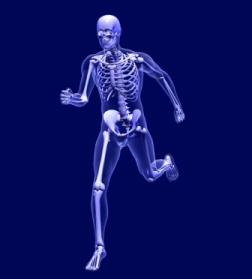May 16, 2012

Assume you have read my blog or learned from the web about our ethos – don’t just recover, conquer. You have scheduled an appointment, undergone the assessment, completed X-rays and the MRI and I have determined that you are a candidate for a regenerative medical procedure for your arthritis. The next step is informed consent.
While there is no data that allows me to promise that I can cause your cartilage to re-grow, there is ample evidence-Regenexx has over 5,000 cases-that allows me to say it is more likely than not that your bone marrow aspirated and concentrated adult mesenchymal stem cells may reduce or eliminate your pain and improve your function. One hope of stem cell treatment is influencing cartilage repair; unlikely though after, age 50. On the other hand, I have a new approach being instituted, arthroscopic debridement with stem cell repair. As an orthopedic surgeon, this will be one of my contributions to the new world. As far though as altering the bio-immune response of the synovium in the arthritic joint, there is little question and that is why I am willing to say that within a reasonable degree of medical certainty, I can minimize or eliminate your pain. Now you ask at what risk? As of now, there are two downsides as no procedure is risk free. Associated with any invasive procedure including minimally invasive needling is the risk of infection. While we only use a needle, it is an invasive procedure. Regenexx to the best of my knowledge has not experienced any deep infections in association with their outcomes surveillance. Second, there are a certain percentage of patients who do not respond as hoped. The revision intervention for superficial infection is an antibiotic; for failure it is a repeat attempt at Regenerative Medicine or a joint replacement. To date in the closely monitored outcomes of the 5,000 Regenexx patients, no tumor growth has been reported. Please keep in mind that your adult cells are reintroduced in to a closed environment, a capsulated joint. I repeat the Regenexx experience and data because theirs is the only outcomes evidence available. All other approaches and all other companies have depended on anecdote in the absence of gathering scientific evidence.
To the best of my knowledge, the cost of Regenerative Medicine is assumed by the patient. No insurance carrier and certainly not Medicare at this time will pay for stem cell management of arthritis. If the aspiration of your bone marrow and the concentration thereof is done under IRB oversight, we are in complete accordance with FDA governance. Someday, the indemnification community may choose to cover Regenerative Medicine, especially when our studies demonstrate the cost savings when compared to a total joint replacement. The global charge for a joint implant runs between $45,000 and $60,000; a revision, about $70,00 to $120,000. Should an infection ensue, the costs may go up by another $150,000 additional. Then there is rehabilitation; Regenerative Medicine is a matter of weeks, not months as in a joint replacement
What about outcomes; am I really able to compare those of stem cell management with a total joint replacement? Watch Kobi Bryant in the NBA playoffs or Alex Rodriguez, as third baseman for the New York Yankees. If you want to learn more, call and schedule an appointment. In my new website, where I hope to become your resource for Regenerative Medicine, there will be a section of new patient stories and the results of treatment. Stay tuned.
Mitchell B. Sheinkop, M.D.
1565 N. LaSalle Street . Chicago . Illinois . 60610
847.390.7666 or 312.475.1893
Tags: bone marrow, Bone Marrow Concentrate, Platelet Rich Plasma, PRP, Regenerative, Regenerative Pain Center, stem cells, treatment
May 9, 2012

Introduction and background
While the benefits of total hip replacements are numerous, there is a known incidence of associated pain leading to early revision. Have attempts at improving the prosthetic implant, shortened lengths of hospital stay, minimally invasive procedures and metal on metal bearings been a process of revolution or as in the case of Gulliver, devolution?
The goal of the surgeon has historically been pain relief and a 20-year plus satisfactory outcome when performing a total hip. More recently, survivorship prioritization seems to have been replaced by restoration of hip anatomical geometry, thereby optimizing muscle tension and strength, equalization of leg lengths, and enhancement of hip stability all via modularity. The newer generations of prostheses have been designed in an attempt to facilitate and accommodate the latest fads in surgical approaches so as to lessen the scar length, perhaps minimize muscle damage-still a matter of debate-and return the patient to full activity status in days or weeks rather than months.
I just received an AMA alert that by 2030, 42% of Americans will be obese. Short incision, less hospital stay, prompt return to activity, who are we kidding? Lets look more closely at the cost of supposed progress in the newest prosthetic designs.
Metal Fretting and Corrosion. This has been reported with cobalt chrome and cobalt chrome- titanium junctions. The more modularity and junctions between metals, the more potential metal debris generation. Metal on metal bearings produce small metallic wear debris. Furthermore, elevated blood serum ion levels and metal hypersensitivity resulting in an adverse local tissue reaction may occur with metal-metal articulate surface bearings causing premature failure due to osteolysis, aseptic loosening and pseudo tumor formation.
So what should you do and look for whether or not you are in pain after a total hip replacement?
Evaluation for infection-a screening serum ESR, C-Reactive Protein, and WBC. If any of these are abnormal, a hip aspiration need be performed.
Serum metal ion levels-serum chromium ion levels above 17ug/L and cobalt ion levels above 19ug/L suggest metallosis within the joint. Pseudotumors have been found at lower levels and are identified by ultrasound and CT scans. In the United Kingdom, the cut off level is 7 parts per billion (7ppb) chromium or cobalt.
Metal hypersensitivity-Nickel is the worst offender but chromium and cobalt may play a role. The problem is the area is still poorly understood with the only available testing including patch testing and the lymphocyte transformation test.
Radiographic analysis-Your physician will look for signs of loosening, osteolysis and pseudotumor formation
If you have a painful total hip replacement, you need an evaluation.
There is another consideration, postpone or avoid the replacement. Might Regenerative medicine and stem cell management, help control you pain and possibly postpone or even help avoid a total joint replacement?
Mitchell B. Sheinkop, M.D.
312-475-1893 or 312-475-1893
1565 N. LaSalle Street
Chicago, Illinois 60610
Tags: Hip Replacement, Osteoarthritis, Regenerative Pain Center, stem cells
Apr 25, 2012

Musculoskeletal Care of the Mature Patient
The number one reason in the United States for a trip to a physician has to do with pain arising in the musculoskeletal system, especially in the Boomers and maturing athletes. Might regenerative medicine and stem cells provide an extended warranty for your frame? That was my basic question when I attended the American Academy of Orthopedic Surgeons continued medical education course last weekend “Advances in Care of the Aging Athlete”. What was generally reinforced is that the number one way to stay healthy and young is through fitness and sports; stay active on an aging frame. In other words put old on hold. Certainly proper nutrition is a key component as is Resveratrol and maybe testosterone supplementation for Manopause. Woman beware, hormone replacement therapy is generally not good for your health.
In the end though, the real problem is cartilage deterioration with age be it from genetics, congenital, developmental insult or trauma. The recent media attention to stem cells has introduced a clinical possibility of changing the natural history of progression of degenerative arthritis and perhaps even reversing the programmed death of cells. Peyton Manning went to Europe for stem cells in the neck, Governor Perry chose Asia for his back and Terrell Owens returned to football after stem cell intervention in Korea. You all probably are aware of the Fred Couples, Kobe Bryant and Alex Rodriguez having returned to top performance with the assistance of regenerative medicine. By harvesting Mesenchymal Stem cells form you bone marrow and concentrating them, the injectate is the best of all potential immune modulators with the greatest possible ant-inflammatory effect. There are a large number of animal studies confirming the efficacy of stem cell management of cartilage; such clinical treatment is now the standard of care in the veterinarian world, particularly with the injured or arthritic hoarse. As well, there is an emerging body of science to support adult mesenchymal derived stem cell management of the aging human joint appearing in peer reviewed medical journals. The International Journal of Rheumatic Diseases to illustrate, recently published an article concerning four patients with moderate to severe osteoarthritis of the knee who experienced marked improvement with mesenchymal stem cell therapy. The problem is that for the most part, human clinical trials are taking place outside the United States. Enter Regenexx and its IRB clinical trial. That’s why I joined the Regenexx Network. To learn more, schedule an appointment.
Tags: arthritis, bone marrow, Clinical Trial. Mitchell B. Sheinkop, Osteoarthritis, PRP, Regenerative Pain Center, stem cells, treatment
Apr 19, 2012

The Regenerative Pain Center is about to begin as well. I completed my training at Regenexx on Thursday and started enrolling patients on Friday. I chose to affiliate with Regenexx because theirs is the longest and largest outcomes database pertaining to the clinical use of stem cells in the care and treatment of arthritis and musculoskeletal injury. Certainly, there remains a major role for orthopedic surgery in the management of arthritis and joint injury but now the patient has an option. Given the fact that 15 to 20% of joint replacement recipients have complication or unsatisfactory outcomes or are never able to resume the type of activity previously enjoyed, it makes all the sense in the world to exhaust the regenerative care option before a joint replacement. While I was writing this Blog, my landlord dropped by to tell me the saga of his son-in-law’s father. The latter, a surgeon himself, still is experiencing pain and repeated hemorrhage into his knee eight months after a knee replacement. The ongoing problem is contributing, in part, to his decision to retire. Might he have avoided a knee replacement if he had tried the regenerative medicine route?
The world of stem cell management is a commitment for me because I believe in the process. It is also dynamic, as another means of approach has been introduced for stem cell harvesting that is very promising and less complicated than bone marrow harvesting. Blood born stem cells may now be captured by concentrating platelet rich plasma. Until now, PRP, while having some stem cell component, was really an anti-inflammatory approach because of a wealth of growth factors. With the recent introduction of a major advance in platelet concentration methodology by Regenexx, ultra concentrated PRP, introduces a potential sufficient quantity of stem cells to begin to mirror the possibilities of bone marrow derived stem cells.
To complete my preparation and credentialing for the transition from a reconstructive joint replacement surgeon to a regenerative medicine restoration physician, I am off to the American Academy of Orthopedic Surgeons course “Advances in Care of the Aging Athlete” on Thursday. In addition to stem cells, the subject matter includes Nutrition and Supplementation: Optimization with Aging; Anti-Aging and Performance Drugs; Cartilage Restoration; Knee Rehabilitation in the Arthritic Knee: How Much Can We Push?; The Basic Science of Aging: Implications for the Male and Female Master Athlete; Injectable Adjunctive Therapies: Solid Treatment or Snake Oil: Performance Optimization in the Masters’ Athlete; and more. I won’t live forever; but while I am still here, my ethos is “Just Do It”. To learn more, call and schedule an appointment.
Mitchell B. Sheinkop, M.D.
312-475-1893 or 312-475-1893
1565 N. LaSalle St., Chicago, Illinois 60610
Tags: Clinical Trial. Mitchell B. Sheinkop, Regenerative Pain Center, Regenexx, stem cells
Mar 27, 2012

British Hip Society recommends against use of stemmed, large diameter, metal-on-metal implants in primary total hip replacements.
Based on discussions held at its annual meeting, the British Hip Society (BHS) has issued a statement on the use of large diameter metal-on-metal bearing total hip replacements. BHS advises that stemmed, large diameter metal-on-metal primary total hip replacements using bearings of 36 mm or greater should no longer be performed until more evidence is available, except in properly conducted and ethically approved research studies. The advice does not apply to hip resurfacing. In addition, BHS endorsed guidance recently issued by the United Kingdom’s Medicines and Healthcare Products Regulatory Agency (MHRA), calling for annual monitoring for the life of the implant, as a precautionary measure.
Other News
FDA committee to discuss reports of joint destruction associated with anti-NGF drugs.
The U.S. Food and Drug Administration (FDA) plans to hold a meeting next week to discuss the anti-nerve growth factor (Anti-NGF) drug class that is currently under development, along with safety issues possibly related to the drugs. Anti-NGF drugs are being developed for the treatment of chronic painful conditions such as osteoarthritis, chronic lower back pain, cancer pain, and other conditions. An advisory committee will be asked to determine whether reports of joint destruction represent a safety signal related to the anti-NGF class of drugs, and whether the risk-benefit balance for these drugs favors their continued development as analgesics.
Sheinkop meets with Regenexx in Colorado to evaluate new office based needle arthroscopic system
While it is true that I was skiing last week in Vail, while I vacationed, I still worked on assuming a leadership position in the new world of regenerative medicine. What I as an individual am able to contribute is my background and experience in research and clinical practice of treating arthritis with joint replacement surgery. Now I am dedicating myself as an orthopedic surgeon to avoiding or postponing joint replacement. When arthritis is debilitating and the X-ray is that of bone on bone, there is still an indication for a new hip or a new knee. But patient beware, there are restrictions inherent in a new joint. My life-long biking, skiing and fly fishing buddy, has relatively severe arthritis of his left knee. Yet he still can bike faster and ski better than me-I out fish him-because he has taken my counsel and postponed, maybe avoid a knee replacement via Regenerative Medicine.
To learn if you are a candidate for regenerative medicine, feel free to call
Mitchell B. Sheinkop, M.D.
312-475-1893 or 312-475-1893
1565 N. LaSalle St, Chicago, IL 60610
Tags: bone marrow, Bone Marrow Concentrate, Clinical Trial. Mitchell B. Sheinkop, FDA, Osteoarthritis, Pilot Study, Regenerative, Regenerative Pain Center, Regenexx, stem cells




